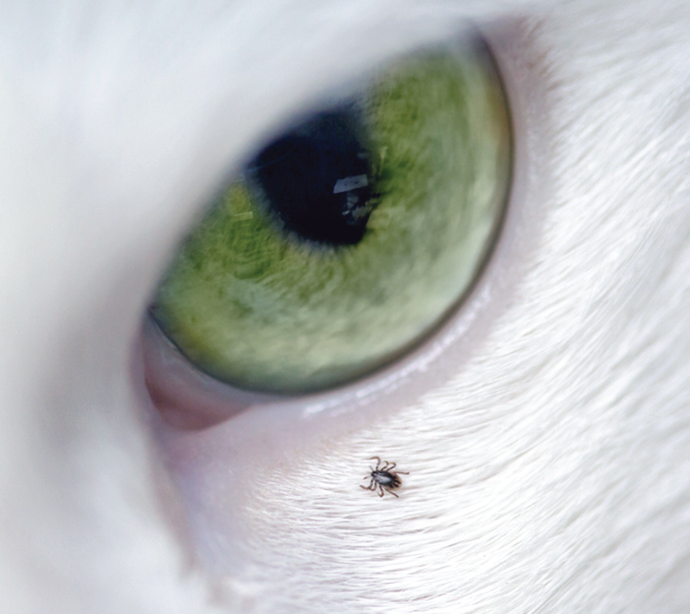If your cat goes outside this time of year, he may bring home an unwelcome guest—a tick. These arachnid parasites need a bloodmeal to move through the stages of their lifecycle and reproduce. As well as creating a bug bite, they can spread diseases such as Lyme disease, cytauxzoonosis, tularemia, hemobartonellosis, babesiosis, and ehrlichiosis, some of which can be fatal. Any tick on your cat needs to go.
An unattached tick is easy to remove. Just grab it with tweezers as it walks across your cat’s skin or fur. But once a tick bites your cat’s skin, it will latch on tightly. Thankfully, there are several methods to dislodge an attached tick.
Leni K. Kaplan, DVM, MS, senior lecturer in the Cornell Small Animal Community Practice, says, “My preferred ways of removing ticks include using the Ticked Off spoon tick removal device, tweezers, or removing the tick with your fingers. I do not recommend commercial flea/tick shampoos or dips, as they may contain chemicals that are irritating to the skin or harmful to cats.”
A variety of tick-removal tools are available, including the Ticked Off spoon, Tick Key, Tick Twister, Tick Tornado, and Tick Stick. All are small enough to keep on your key fob or in a purse or pocket.
Tick removers all incorporate a notch that allows you to get a good grip on the tick as close to the skin as possible and eliminate the factor of how much pressure to apply. Simply wiggle the tool around the tick’s head until it is tightly wedged in the notch. Most products instruct you to pull straight when removing the tick, but the Tick Twister recommends a twisting motion as you pull back.
If your cat goes outside frequently, he should be kept on a regular preventive medication for optimal protection. Dr. Kaplan says, “If a cat has many ticks, I would advise removing as many as possible manually while also applying a veterinarian-approved topical product (Bravecto for cats, Frontline for Cats, Revolution Plus) which will kill the ticks within 24 to 48 hours.”
Remove a Tick With Tweezers
- Part the hair around the tick to get access.
- Grasp the tick as close to the skin as possible, gripping it firmly but not squeezing so hard as to rupture the tick or break its mouthparts off.
- Pull back steadily until the tick releases.
- Dispose of the tick. Place it in a sealed bag or wrap it in a piece of tape and throw
it away, or flush it down the toilet. - Wash your hands, even if you had access to vinyl gloves.




